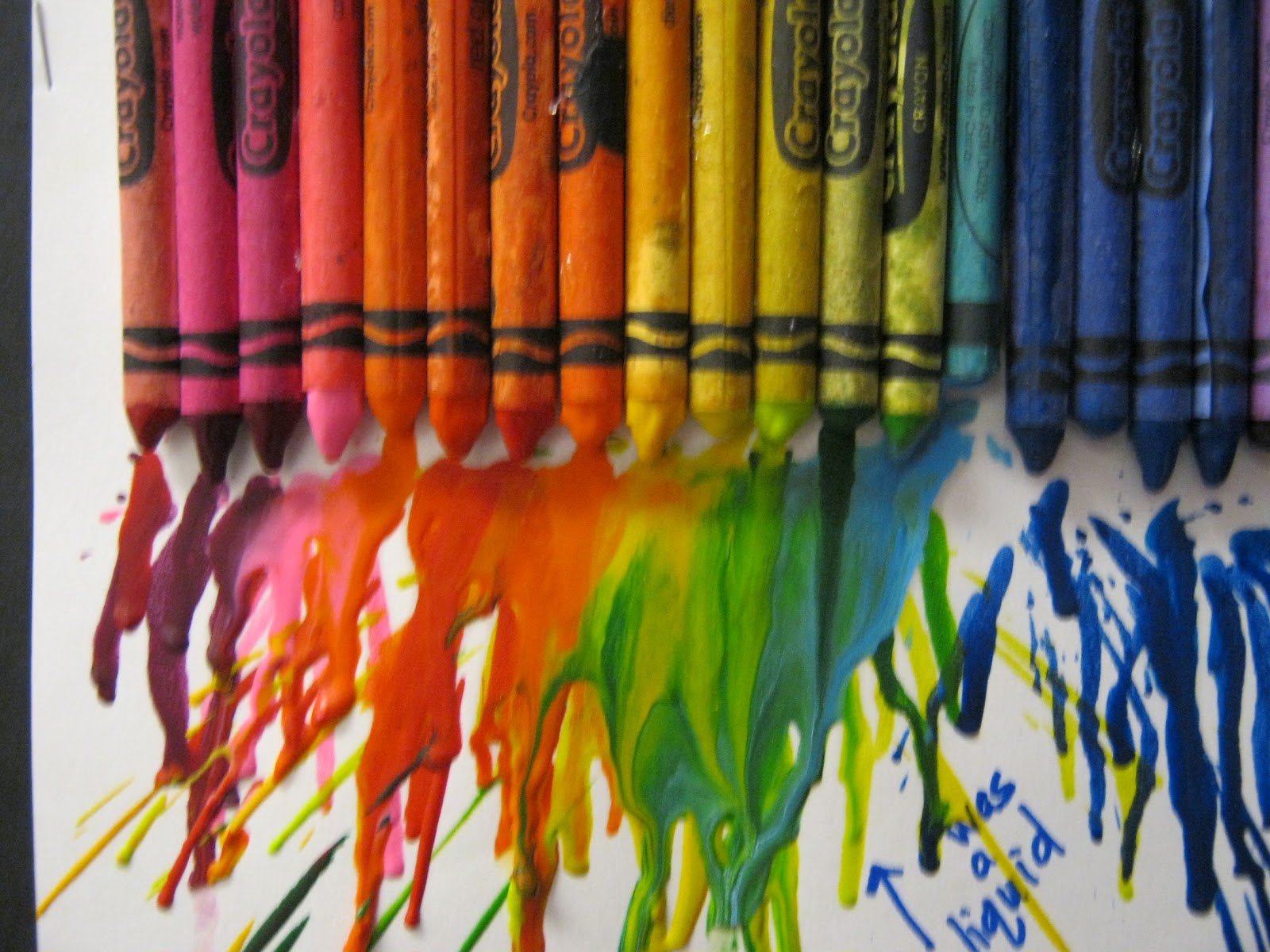The melting crayon experiment is not only a fascinating science project but also a creative way to engage children in learning about the properties of materials and the science of heat. This hands-on activity allows kids to explore the transformation of solid crayons into liquid form, making it an exciting and visually stimulating experience. In this article, we will delve into the details of the melting crayon experiment, its educational benefits, and how to execute it safely at home or in a classroom setting. This experiment is perfect for children of various age groups and can inspire a love for science through an engaging and colorful approach.
As we explore the melting crayon experiment, we will cover essential aspects such as the materials needed, step-by-step instructions, and safety precautions. Additionally, we will highlight the scientific concepts behind melting and solidification, ensuring that both kids and parents can understand the principles at play.
Whether you're a parent looking for a fun weekend activity or a teacher seeking an engaging classroom project, the melting crayon experiment is an excellent choice. With its mix of art and science, it captures children's attention while teaching them valuable lessons about chemistry and physics.
Table of Contents
- What is the Melting Crayon Experiment?
- Materials Needed
- Step-by-Step Instructions
- Scientific Concepts Explained
- Safety Precautions
- Educational Benefits of the Experiment
- Variations of the Experiment
- Conclusion
What is the Melting Crayon Experiment?
The melting crayon experiment is a simple yet captivating science project where crayons are melted to observe the changes in state from solid to liquid. Kids can experiment with different colors and observe how they blend when melted together. This activity not only provides a visual treat but also fosters creativity as children can use the melted crayons to create unique art pieces. The transformation of crayons serves as an excellent introduction to the concepts of melting and freezing, making science both fun and approachable.
Materials Needed
To conduct the melting crayon experiment, you will need the following materials:
- Crayons (various colors)
- Oven or heat source (such as a hot plate)
- Oven-safe container or silicone mold
- Aluminum foil (optional)
- Hot pads or gloves for safety
- Paper towels for cleanup
- Color mixing chart (optional for older kids)
Step-by-Step Instructions
Follow these steps to successfully conduct the melting crayon experiment:
- Preheat the oven to 200°F (93°C).
- Remove the wrappers from the crayons and break them into smaller pieces for quicker melting.
- Arrange the broken crayon pieces in the oven-safe container or silicone mold. You can create patterns or mix colors as desired.
- Place the container in the preheated oven and allow the crayons to melt for about 10-15 minutes. Keep a close eye on them!
- Once the crayons are fully melted, carefully remove the container from the oven using hot pads or gloves. Be cautious as the container will be hot!
- Let the melted crayons cool at room temperature until they solidify again. This may take a few hours.
- Once solid, you can pop the crayons out of the mold or container and admire your colorful creations!
Scientific Concepts Explained
The melting crayon experiment offers an excellent opportunity to explain several scientific concepts:
1. Phase Changes
Understanding the transition between solid and liquid states is crucial. When the crayons are heated, the molecules gain energy and move faster, leading to melting. Once cooled, the molecules lose energy and solidify again.
2. Temperature and Heat Transfer
This experiment demonstrates how heat affects materials. The oven provides a controlled environment to observe how temperature impacts the state of matter.
3. Color Mixing
As crayons melt together, kids can observe how different colors blend to create new shades, introducing them to basic color theory.
Safety Precautions
While the melting crayon experiment is generally safe, it's essential to take precautions:
- Always supervise children when using an oven or heat source.
- Use oven mitts or hot pads to avoid burns when handling hot containers.
- Ensure proper ventilation in the area where the experiment is conducted.
- Allow melted crayons to cool completely before handling them.
Educational Benefits of the Experiment
The melting crayon experiment provides numerous educational benefits, including:
- Enhancing creativity through art and color exploration.
- Teaching fundamental scientific principles related to heat and phase changes.
- Encouraging critical thinking and problem-solving skills when experimenting with different color combinations.
- Promoting hands-on learning and engagement in the scientific process.
Variations of the Experiment
To keep the activity fresh and engaging, consider trying these variations:
- Create layered crayon art by pouring different colors at various intervals.
- Use different molds to create unique shapes, such as hearts or stars.
- Incorporate a color mixing chart for older children to predict outcomes based on the colors they use.
- Conduct the experiment outdoors on a sunny day using aluminum foil to create a makeshift solar oven.
Conclusion
The melting crayon experiment is a delightful and educational activity that combines art and science in a fun way. Through this experiment, children can learn about the properties of materials, heat, and color mixing, all while creating beautiful art pieces. We encourage parents and educators to try this experiment with kids and witness the joy of discovery and creativity. If you enjoyed this article, please leave a comment below, share it with friends, or explore more fun science experiments on our website!
Kate Middleton: Last Seen And Her Impact On The Royal Family
Exploring The Life And Legacy Of Charles Scotland
Knicks Celebration: A Deep Dive Into New York's Basketball Culture


